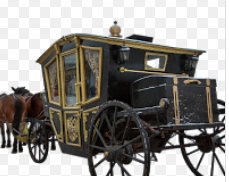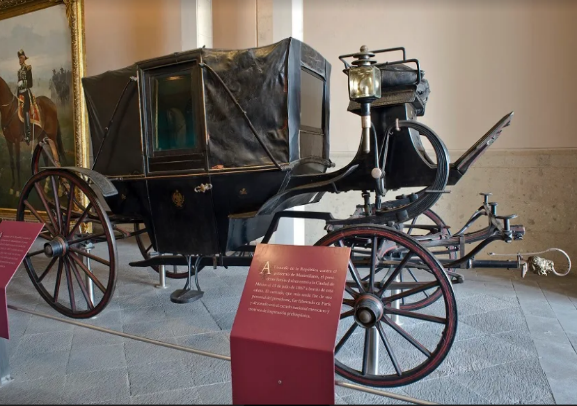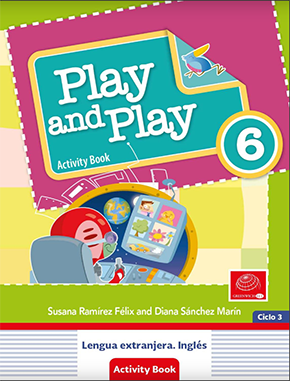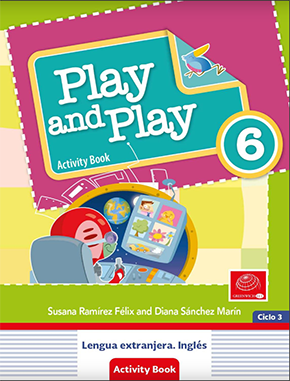Un museo en casa
Valoración de la comunidad:
Última Actualización:
6 de Febrero de 2025 a las 15:54
Un museo en casa
Aprendizaje esperado: busca información sobre un tema en diversos textos.
Énfasis: explora diversos textos para obtener información.
¿Qué vamos a aprender?
Aprenderás a obtener información, para elaborar una presentación de un tema de tu interés.
¿Qué hacemos?
To start, we will review some of the verbs that we have used before. Para comenzar, revisaremos algunos de los verbos que hemos trabajado antes.
Run, Drink, Swim, Eat.
Then let’s start with our lesson today. Comencemos con la clase de hoy.
Teacher, I need your help with my homework. Maestro, necesito tu ayuda con una tarea.
How can I help? ¿Cómo te ayudo?
I have to do a presentation about any topic I like. But I don’t know where to start. Tengo que hacer una presentación sobre el tema que yo quiera, pero no sé por dónde empezar.
Let 's start there. What would you like to talk about? Empecemos ahí ¿De qué te gustaría hablar?
I like History of Mexico, but I don’t want to do a presentation just talking about it. Me gusta la historia de México, pero no quiero hacer una presentación solo hablando de ella.
I have an idea. Tengo una idea.
I learned a lot about.
Mexican History when I visited the Museo Nacional de Historia del Castillo de Chapultepec. Yo aprendí mucho de historia de México cuando visité el Museo Nacional de Historia del Castillo de Chapultepec.
But I can’t go now because we have to stay home. Pero no puedo ir ahora porque debemos quedarnos en casa.
Yes, you can! El Museo Nacional de Historia del Castillo de Chapultepec, has a virtual visit on its website. ¡Sí puedes! El Museo Nacional de Historia, tiene una visita virtual en su página de internet.
What other museums do you know? ¿Qué otros museos conoces?
I know the Mask Museum in San Luis Potosí. Conozco el Museo de la Máscara en San Luis Potosí.
And the Desert Museum in Saltillo. Y el Museo del Desierto en Saltillo.
And in Mexico City, I visited Universum. Which is a museum of science and technology. En la Ciudad de México, visité Universum, el Museo de Ciencia y Tecnología.
You know a lot of museums. Conoces muchos museos.
I think Chapultepec's Castle has a lot of information about different topics. I don’t know where to begin. Creo que en el Castillo de Chapultepec hay mucha información sobre distintos temas. No sé por dónde empezar.
For your presentation, I recommend you make questions to research the topic you like. So, let’s review the WH questions. Sí, para tu presentación, te recomiendo que hagas preguntas para investigar del tema que te interesa. Así que revisemos las palabras interrogativas.
What – ¿Qué?
Where – ¿Dónde?
When – ¿Cuándo?
Why - ¿Por qué?
Who – ¿Quién?
Can you give two examples? ¿Puedes darme dos ejemplos?
Yes. Where is the Museo Nacional de Historia del Castillo de Chapultepec? ¿Dónde está el Museo Nacional de Historia del Castillo de Chapultepec?
It is in Mexico City. Está en la Ciudad de México.
Yes. Choose another one. Sí. Escoge otra.
Who lived in that building a long, long time ago? ¿Quién vivió en ese edificio hace muchos, muchos años?
I know a lot of presidents lived there. Sé que muchos presidentes vivieron ahí.
Good job! ¡Buen trabajo!
I have some information here about the Museum. Let’s read it and you can choose which topic is better for you. Aquí tengo información sobre el museo. Vamos a leerla y así decides cuál tema es mejor para ti.
Mexico's National Museum of History is located in Chapultepec Castle, a historic building of great symbolic and historical value for Mexicans. - El Museo Nacional de Historia de México está localizado en el castillo de Chapultepec. Un edificio histórico de gran valor simbólico para las y los mexicanos.
Some important events took place there, including the Battle of Chapultepec during the Mexican-American War, when the building was in use as a military academy. Algunos eventos importantes sucedieron ahí, incluyendo la batalla de Chapultepec durante la guerra entre México y Estados Unidos, cuando el edificio era utilizado como academia militar.
President Lázaro Cárdenas decided to move the presidential residence to a more understated location, Los Pinos, which is also in the Chapultepec Park, and in 1944 Chapultepec Castle was inaugurated as the Museo Nacional de Historia. El presidente Lázaro Cárdenas decidió mover la residencia presidencial a un lugar más modesto, Los Pinos, que también se encuentra en el parque de Chapultepec. En 1944 el Castillo de Chapultepec fue inaugurado como el Museo Nacional de Historia.
At the museum you will see murals painted by several important Mexican artists, lovely gardens and some presidential carriages. En el museo verás murales de muchos artistas importantes, hermosos jardines y los carruajes presidenciales.
What about carriages? ¿Qué tal acerca de carruajes?
I know there is a very important carriage there. Sé que hay un carruaje muy importante ahí.

Very Good. Muy bien.
You learned some good stuff about this important museum. Ya conoces un poco más sobre este museo tan importante.
The next step is to make museum cards. El siguiente paso es hacer tus fichas museográficas.
What is a museum card? ¿Qué es una ficha museográfica?
A museum card is a document where you write down all the main information about your visit to a museum or about an art piece you visited there. Una ficha museográfica es un documento donde anotarás la información principal de tu visita al museo o de alguna obra de arte que hayas visitado ahí.
But how would I know what information is important? ¿Cómo sabré qué información es importante?
Because you made some questions before. Remember? Porque antes planteaste algunas preguntas.
¿Te acuerdas?
Yes. But I’ m not sure I understand what a museum card is. Sí, pero no estoy seguro/a de entender qué es una ficha museográfica.
Once, I visited the Anthropology Museum and I made some museum cards. Do you want to see them? Una vez visité el Museo de Antropología e hice mis fichas museográficas ¿Quieres verlas?
Sure, teacher. Seguro, maestro.
Y así me será más sencillo realizar las mías sobre mi tema.
But before that, what would you expect to find in the Anthropology Museum? Antes que eso, ¿Qué esperarían encontrar en el Museo de Antropología?
I expect to learn about ancient Mexican cultures. Yo esperaría aprender sobre antiguas culturas mexicanas.
Excellent. I made my museum cards about Mayan Culture.
I had some questions about Mayan culture, so I went to Mayan Room immediately. Hice mis fichas museográficas sobre la cultura maya. Tenía algunas dudas sobre ella así que fui inmediatamente a la Sala Maya.
This is my museum card.

Where did the Mayan civilization settle in? ¿Dónde se asentó la civilización maya?
The ancient Mayans lived mostly in Central America including Guatemala, Belice, Honduras, Yucatán Península, and El Salvador. Los antiguos mayas vivían principalmente en Centroamérica: Guatemala, Belice, Honduras, la península de Yucatán y El Salvador.
What language did the Mayan civilization speak? ¿Qué lengua hablaba la civilización maya?
This culture spoke Yucatec Mayan or known simply as Mayan. Esta cultura hablaba el Maya Yucateco también conocido simplemente como Maya.
What did the Mayans cultivate? ¿Qué cultivaban los mayas?
Mayan´s main crop was corn, but they also cultivated beans, squash and fruit trees. El cultivo principal de los mayas era el maíz, pero también cultivaban frijoles, calabaza y árboles frutales.
Now I understand what a museum card is. Ya entendí qué es una ficha museográfica.
Are you ready to make yours about carriages? Estás listo/a para hacer la tuya sobre carruajes.
Ready! ¡Listo!
What would the title be? ¿Cuál sería el título?
Creo que sería el carruaje presidencial. I think it would be “Presidential carriage”.
Where can you see this carriage? ¿Dónde puedes ver este carruaje?
In Museo Nacional de Historia del Castillo de Chapultepec.
Now, let’ s make some questions about the Presidential carriage. Ahora, hagamos algunas preguntas para el carruaje presidencial.
The first one would be Who used this carriage? La primera sería, ¿Quién usó este carruaje?
And the answer will be: this carriage was used by the Mexican president Benito Juárez. - Y la respuesta sería: este carruaje fue usado por Benito Juárez.
When did President Benito Juarez use this carriage? ¿Cuándo usó ese carruaje Benito Juárez?
This carriage was used from 1863 to 1867. Este carruaje fue usado por Benito Juárez de 1863 a 1867.
What else can you add? ¿Qué más puedes agregar?
A picture. Una foto.

Do you know Rutila and Ruperto? ¿Conoces a Rutila y Ruperto?
No, but teacher Gaby told me about them. No, pero la maestra Gaby me habló de ellos.
They are two funny rats that like to talk about a lot of things. Let’s see what they have for us. Son dos ratas muy divertidas a las que les gusta hablar de muchísimas cosas.
Observa el siguiente video.
- Video. Rutila y Ruperto explicando una ficha museográfica.
They are so funny indeed. Sí, son muy divertidas.
They gave us more information about museum cards. Nos dieron más información sobre fichas museográficas.
Ruperto gave me an idea. Ruperto me dio una idea.
What about preparing an exhibition with the things we have at home. ¿Por qué no preparamos una exposición con las cosas que tenemos en casa?
Yes, that's great! You can make a museum card about your clothes. Podrías hacer fichas museográficas sobre tu ropa.
How would that be? ¿Cómo sería eso?
Title: smelly socks. Título: calcetines apestosos.
Author: Leti. Autora: Leti
Date of creation: her birthday. Fecha de creación: su cumpleaños.
Basic information: these smelly socks got their particular smell by playing soccer, climbing trees, and dancing. Información básica. estos calcetines apestosos obtuvieron su aroma particular jugando al fútbol, trepando árboles y bailando.
I think that is a completed museum card.
I really want to know what students will put on their exhibitions. Quiero saber qué pondrán los estudiantes en sus exposiciones.
What will you put on? ¿Tú qué pondrás?
I will exhibit all the drawings that my niece has given to me. Expondré todos los dibujos que mi sobrina me ha dado.
What about you? ¿Y tú?
I will put all my shoes with an explanation of all the places I walked using them. Pondré mis zapatos con todos los lugares en los que caminé usándolos.
The class is about to finish. La clase está por terminar.
I hope we helped you with your presentation. You helped me a lot! ¡Me ayudaron muchísimo.
Now I know about history, about museums and about museum cards. Ahora sé sobre historia, sobre museos y sobre fichas museográficas.
Keep asking everything you want to know. That's the way you can keep your mind creative and curious. Así mantendrán su mente creativa y curiosa.
And remember the WH questions: what, qué, why, por qué, where dónde, when, cuándo.
Thank you for your attention. Gracias por tu atención.
¡Buen trabajo!
Gracias por tu esfuerzo.
*Este material es elaborado por la Secretaría de Educación Pública y actualizado por la Subsecretaría de Educación Básica, a través de la Estrategia Aprende en Casa.
Para saber más:
Lecturas

https://libros.conaliteg.gob.mx/proni.html

https://libros.conaliteg.gob.mx/proni.html

https://libros.conaliteg.gob.mx/proni.html



Login to join the discussion